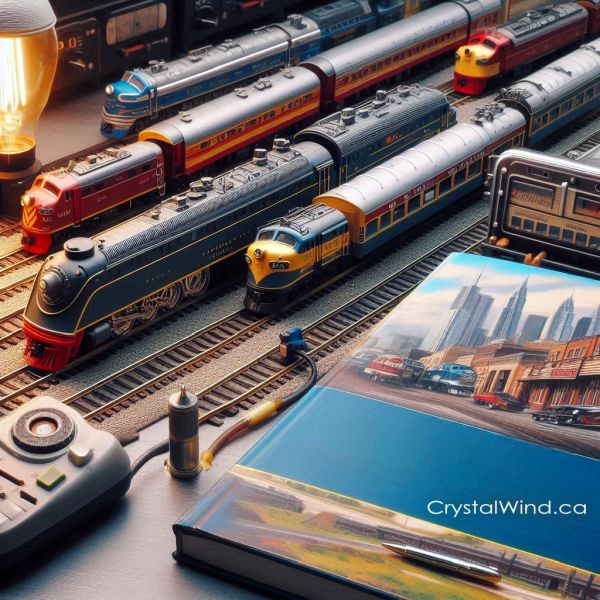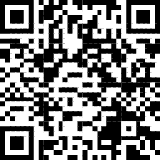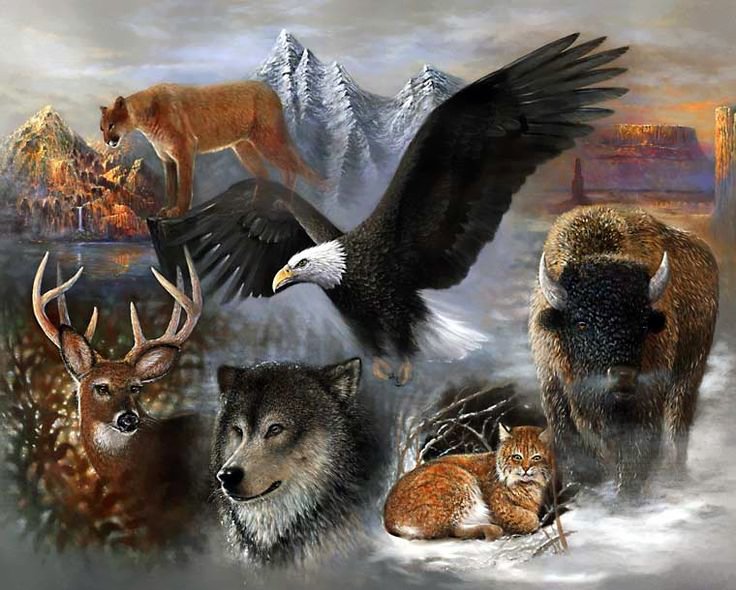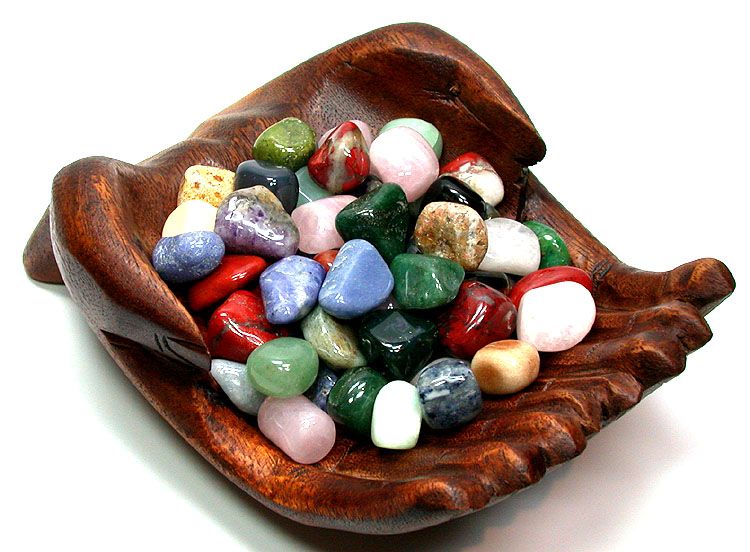The Ultimate Detailed Guide to Electric Model Train Collecting
- Details
- Views: 1435

Electric model train collecting is more than just a hobby—it’s a passion that blends history, craftsmanship, and creativity.
Whether you're a beginner exploring the world of locomotives or a seasoned collector looking to expand your railway empire, this ultimate guide has everything you need. From choosing the right scale and brands to maintaining vintage trains and building stunning layouts, we cover it all. Dive in and discover expert tips, insider knowledge, and the joy of collecting electric model trains!
Understanding Scale Classifications
Z Scale (1:220)
Z Scale represents the smallest commercially available model trains in the world. These incredibly detailed miniatures operate on tracks just 6.5mm wide, making them perfect for collectors with limited space. Despite their tiny size, modern manufacturing techniques allow for remarkable detail. Collectors particularly appreciate Z scale for creating elaborate cityscapes and landscapes in a compact area. The precision engineering required for Z scale makes these models particularly valuable, though they require a steady hand and excellent lighting for maintenance.
N Scale (1:160)
N Scale has become increasingly popular among urban collectors and those creating expansive layouts in limited spaces. At approximately half the size of HO scale, N scale trains offer an excellent compromise between size and detail. These models excel in landscape modeling, allowing creators to build impressive mountain ranges and extensive rail yards in reasonable spaces. Manufacturers have significantly improved the running qualities and detail of N scale equipment over the past decade, making them more reliable than ever.
HO Scale (1:87)
The most widely collected scale in the world, HO scale offers the perfect balance of size, detail, and availability. This scale dominates the market with the largest selection of trains, accessories, and scenic elements. Beginners often start with HO scale due to its manageable size and extensive support community. The scale's popularity ensures competitive pricing and constant new releases from manufacturers, making it an excellent choice for both collectors and operators.
S Scale (1:64)
Originally popularized by American Flyer, S scale occupies a sweet spot between HO and O scales. This scale offers exceptional detail while remaining easy to handle and operate. S scale has experienced a renaissance among collectors who appreciate its historical significance and the high quality of both vintage and modern offerings. The scale's size makes it particularly suitable for detailed scenic work while remaining robust enough for regular handling.
O Scale (1:48)
O Scale carries the legacy of Lionel's golden age and continues to captivate collectors with its impressive size and presence. These trains offer exceptional durability and visual impact, making them perfect for both serious collectors and family layouts. Modern O scale locomotives can command prices from several hundred to thousands of dollars, with vintage pieces often selling for even more. The scale's size allows for incredible detail and robust mechanical systems.
G Scale (1:24 to 1:32)
Garden railways find their perfect match in G scale, which stands for "Gross" (German for "big"). These large-scale trains weather outdoor conditions admirably while providing impressive visual appeal. G scale equipment offers exceptional durability and ease of maintenance, making it ideal for both indoor and outdoor displays. Many collectors appreciate G scale for its ability to create realistic garden railways that integrate with live plants and natural elements.
Professional Maintenance Protocols
Track Maintenance
Regular track maintenance forms the foundation of any successful model train operation. Begin with thorough cleaning using isopropyl alcohol on lint-free cloths. Inspect all rail joiners monthly for proper electrical conductivity and alignment. Clean tracks before each operating session to ensure smooth running and prevent damage to locomotive wheels. Pay special attention to switches and crossings, where debris most commonly accumulates.
Locomotive Care
Establish a regular maintenance schedule with lubrication every few months. Focus on gears, bearings, and other moving parts using appropriate lubricants for your scale. Check motor brushes annually for wear and replace as needed. Test electrical pickup systems regularly, cleaning contact points with electrical contact cleaner. Document all maintenance procedures and create a schedule for each locomotive in your collection.
Rolling Stock Maintenance
Implement a systematic approach to maintaining your rolling stock fleet. Check wheel gauges using NMRA standards gauges, ensuring proper tracking. Clean car wheels regularly to prevent track contamination. Inspect couplers for proper height and operation, adjusting as necessary. Verify car weights against NMRA recommendations for optimal performance. Keep detailed records of maintenance performed on each car.
Advanced Storage Solutions
Professional Display Systems
UV-protected display cases represent the gold standard in train protection. Modern display solutions incorporate LED lighting systems that minimize heat and UV exposure while showcasing your collection. Consider custom-built cases with proper ventilation and humidity control for optimal preservation. Many collectors invest in museum-quality cases with secure locking mechanisms and adjustable shelving to accommodate various scales and configurations.
Climate-Controlled Storage
Temperature and humidity control play crucial roles in preserving model trains. Maintain original packaging whenever possible, as these boxes often provide the best protection against environmental factors. Use acid-free tissue paper for additional protection against corrosion and deterioration. Install humidity monitors in storage areas and maintain levels between 45-55% relative humidity. Consider using desiccant packets in storage containers for additional moisture protection.
Investment Value Analysis
Premium Manufacturers
Lionel leads the investment market, with their 1934 Standard Gauge set achieving a remarkable $250,000 at auction. Märklin, particularly their early Gauge 1 models, commands premium prices in the European market. American Flyer S gauge pieces, especially pre-war examples, continue to appreciate in value. Focus on manufacturers known for limited production runs and exceptional quality when building an investment-grade collection.
Market Trends
Digital command control systems have become standard in modern collecting, with sound-equipped models commanding premium prices. Weathered and factory-detailed models continue to appreciate faster than basic versions. Limited edition runs, particularly those commemorating significant railroad events or anniversaries, often see immediate value appreciation. Contemporary collectors increasingly seek pieces with historical significance and documented provenance.
Strategic Acquisition Methods
Specialty Retailers
Independent hobby shops remain invaluable resources for serious collectors. These establishments often employ experienced modelers who provide expert guidance on purchases and maintenance. Many specialty shops maintain repair services and can access rare or discontinued items through established distributor networks. Building a relationship with local shops often leads to first notice of rare pieces entering the market and opportunities for special orders of limited-run models.
Train Shows and Conventions
Major train shows provide unparalleled opportunities for both acquisition and education. The largest shows, such as the National Train Show and the Amherst Railway Society Railroad Hobby Show, bring together hundreds of vendors and thousands of collectors. These events offer chances to inspect pieces personally before purchase, negotiate prices directly with sellers, and discover rare items that seldom appear in the general market. Many shows include clinics and demonstrations, adding educational value to the shopping experience.
Online Marketplaces
Digital platforms have revolutionized model train collecting. Dedicated online retailers maintain extensive inventories with detailed photographs and descriptions, often offering competitive pricing due to lower overhead costs. Auction sites like eBay have become particularly valuable for locating rare pieces, though buyers must exercise due diligence in verifying item condition and authenticity. Many successful collectors combine online purchasing with in-person buying to maximize their acquisition opportunities.
Digital Integration and Modern Innovation
Command Control Systems
Digital Command Control (DCC) has transformed model train operation. Modern DCC systems allow independent control of multiple locomotives on the same track, with individual sound effects and lighting controls. Advanced systems now incorporate smartphone integration, allowing wireless control through custom applications. Manufacturers continue to develop new features, including automated consisting, realistic sound libraries, and scale-specific speed control.
Collection Management Software
Digital cataloging systems have become essential tools for serious collectors. Modern software allows detailed inventory tracking, including purchase prices, maintenance records, and current market valuations. Many programs integrate with online price guides and auction results, helping collectors make informed purchasing decisions. Photography integration enables comprehensive documentation of each piece's condition and unique characteristics.
Professional Documentation Methods
Inventory Systems
Professional collectors maintain detailed inventories using standardized documentation methods. Each piece should be photographed from multiple angles, with close-ups of any unique features or markings. Documentation includes manufacturer information, production dates, purchase information, and condition reports. Many collectors use numerical grading systems similar to those used in coin collecting to maintain consistent condition assessments.
Maintenance Records
Comprehensive maintenance logs prove essential for preserving value and ensuring proper operation. Records should include dates of service, parts replaced, lubrication schedules, and any modifications or repairs. Digital maintenance tracking systems can automatically generate service reminders and maintain parts inventories. Documentation of original parts and packaging becomes particularly important when pieces are eventually sold or appraised.
Community Engagement Strategies
Local Club Participation
Model railroad clubs offer invaluable networking and learning opportunities. Many clubs maintain permanent layouts where members can operate their equipment and learn from experienced collectors. Club memberships often include access to specialized tools, reference libraries, and group purchasing opportunities. Regular operating sessions provide practical experience in handling and maintaining equipment while building relationships with fellow collectors.
National Organizations
Organizations like the National Model Railroad Association (NMRA) establish standards and provide educational resources for collectors. Membership benefits typically include subscription to specialized publications, access to research libraries, and participation in national conventions. These organizations often maintain certification programs for collectors interested in judging or appraising model trains.
Advanced Collection Development
Era-Specific Focusing
Successful collectors often specialize in specific railroad eras or regions. Steam-era collections might focus on the transition period of the 1940s and 1950s, while diesel enthusiasts might concentrate on first-generation locomotives from the 1950s and 1960s. Modern-era collectors often focus on contemporary railroads and their equipment, taking advantage of the high level of detail available in current productions.
Condition and Rarity Assessment
Understanding condition grading becomes crucial for serious collecting. Factory-new pieces in original packaging command premium prices, particularly for older models. Rarity factors include production quantities, manufacturing variations, and historical significance. Some collectors specialize in prototype models, which accurately represent specific real-world locomotives and often carry significant value premiums.
Market Analysis and Investment Strategy
Value Trends Monitoring
Successful collectors actively monitor market trends through multiple channels. Auction results provide concrete data on current market values, while price guides offer general value ranges. Online forums and collector groups often discuss market movements and emerging trends. Many collectors maintain spreadsheets or databases tracking values of pieces similar to those in their collections.
Investment Portfolio Development
Strategic collectors approach their hobby with clear investment goals. Some focus on acquiring mint-condition pieces from respected manufacturers, while others seek undervalued items with potential for appreciation. Diversification across scales, eras, and manufacturers can help maintain stable portfolio value. Many collectors combine display-quality pieces with investment-grade items stored in original packaging.
Conservation and Preservation
Environmental Control
Professional collectors maintain strict environmental controls in storage and display areas. Temperature should remain stable between 65-75°F (18-24°C) with relative humidity between 45-55%. UV-filtered lighting protects paint and plastic components from degradation. Air filtration systems help prevent dust accumulation and potential contamination.
Handling Protocols
Establish strict handling procedures to prevent damage and wear. Cotton gloves protect pieces from skin oils and contamination. Support locomotives properly when servicing to prevent stress on fragile components. Clean handling areas before working with valuable pieces, and maintain proper tools for each scale and type of equipment.
Future Market Perspectives
Technological Integration
The model train market continues to embrace new technologies. 3D printing enables production of replacement parts and custom details. Advanced control systems incorporate artificial intelligence for more realistic operations. Augmented reality applications are beginning to appear, offering new ways to interact with and display collections.
Market Evolution
Contemporary collecting trends show increasing interest in highly detailed, factory-weathered models. Limited production runs and special editions continue to command premium prices. Digital integration becomes increasingly important in determining value, particularly in modern locomotives. Environmental consciousness has led to growing interest in sustainable packaging and manufacturing methods.
Current Market Price Guide (2024-2025)
Entry-Level Models
Entry-level locomotives have seen significant price adjustments in recent years. Basic DC models from reputable manufacturers like Rapido now start around $239.95, while DCC and sound-equipped versions of the same models command $349.95. Budget-conscious collectors can find quality O-scale rolling stock, such as Lionel flatcars, for around $19.99-39.99.
Mid-Range Investment
Mid-range collectors should expect to invest:
- HO Scale locomotives with DCC: $200-500
- Premium rolling stock: $50-150 per car
- Complete starter sets: $300-800
- Digital control systems: $200-600
Premium Collections
Investment-grade pieces continue to appreciate:
- Brass models: $500-5,000+
- Limited editions: $1,000-10,000
- Vintage pieces in original packaging: $5,000-50,000+
- Rare prototype models can exceed $77,000 at auction
Environmental Control Specifications
Temperature Management
Professional storage facilities maintain strict environmental parameters:
- Optimal temperature range: 65-75°F (18-24°C)
- Maximum daily temperature variation: ±5°F
- Seasonal adjustment rate: No more than 2°F per 24 hours
- Temperature monitoring: Digital logging every 4 hours
Humidity Control
Humidity control requires precise management:
- Ideal relative humidity: 40-50%
- Maximum daily variation: ±5%
- Dehumidification: Active systems for spaces over 100 square feet
- Monitoring: Digital hygrometers with alarm capabilities
Advanced Digital Control Systems
Modern DCC Capabilities
Digital Command Control has revolutionized model train operation:
- Multi-train independent control
- Wireless throttle integration
- Smartphone app compatibility
- Automated consisting features
- Real-time speed and position monitoring
Smart Integration
Latest systems offer enhanced features:
- Cloud-based layout control
- Remote operation capabilities
- Automated scheduling
- Real-time diagnostics
- Expandable systems supporting up to 6 wireless throttles
Professional Handling Protocols
Equipment Requirements
Essential handling tools include:
- Powder-free nitrile gloves
- Anti-static work mats
- Specialized lifting tools
- LED inspection lights
- Micro-fiber cleaning cloths
Maintenance Procedures
Standard maintenance protocol:
- Pre-inspection documentation
- Clean work area preparation
- Tool sterilization
- Systematic disassembly
- Digital photography of all steps
- Detailed reassembly checklist
- Post-maintenance testing
These expanded sections provide specific, actionable information for collectors at all levels. The pricing information is current as of early 2025, though market conditions can cause variations. Environmental control specifications meet museum-grade standards, while the handling protocols reflect best practices from professional restoration services.
Advanced Restoration Techniques
Professional Restoration Standards
Modern restoration practices combine traditional craftsmanship with cutting-edge technology:
- Documentation Phase
- High-resolution photographic mapping
- 3D scanning for complex components
- Original specification research
- Condition assessment reports
- Historical accuracy verification
- Restoration Process
- Non-invasive cleaning techniques
- Original paint matching analysis
- Period-correct part sourcing
- Precision mechanical rebuilding
- Electronics modernization options
Specialized Restoration Tools
Professional restoration requires specific equipment:
- Ultrasonic cleaning systems
- Micro-motor tool sets
- Custom-made jigs and fixtures
- Paint analysis equipment
- Digital calibration tools
Digital Archival Methods
Comprehensive Digital Documentation
Modern archiving incorporates multiple digital elements:
- Visual Documentation
- 360-degree photography
- Macro detail imaging
- Video operation records
- 3D model scanning
- Historical documentation digitization
- Data Management
- Cloud-based backup systems
- Secure digital storage
- Metadata tagging systems
- Cross-referenced cataloging
- Version control tracking
Digital Asset Protection
Implementing professional-grade digital security:
- Encrypted storage systems
- Regular backup protocols
- Off-site data replication
- Access control systems
- Digital watermarking
Advanced Preservation Technologies
Environmental Monitoring Systems
Professional preservation requires precise environmental control:
- Atmospheric Control
- Real-time humidity monitoring
- Temperature fluctuation alerts
- Air quality analysis
- UV exposure tracking
- Vibration detection
- Preventive Conservation
- Corrosion inhibition systems
- Static electricity control
- Dust filtration systems
- Light exposure management
- Climate stabilization units
Material Science Applications
Cutting-edge preservation techniques:
- Specialized coating systems
- Anti-degradation treatments
- Polymer stabilization
- Metal preservation methods
- Composite material protection
Professional Networking Strategies
Digital Networking Platforms
The global model train community continues to expand, with networking opportunities including:
- Online Communities
- Specialized forums
- Social media groups
- Virtual trade shows
- Online auctions
- Expert webinars
- Professional Associations
- International collector groups
- Manufacturer liaison programs
- Restoration networks
- Authentication services
- Valuation specialists
Event Networking
Strategic participation in industry events:
- International trade shows
- Collector conventions
- Technical workshops
- Authentication seminars
- Private collection viewings
Emerging Technologies Integration
Advanced Control Systems
The latest technological developments include:
- Artificial Intelligence Applications
- Automated operation sequences
- Predictive maintenance alerts
- Real-time fault detection
- Pattern recognition systems
- Learning behavior algorithms
- Virtual Reality Integration
- Layout design visualization
- Operation simulation
- Training programs
- Virtual collection tours
- Remote collaboration tools
Future Technologies
Emerging developments in the field:
- Quantum sensors for precision control
- Nano-coating protection systems
- Bio-based preservation materials
- Smart material applications
- Augmented reality interfaces
Conclusion
Electric model train collecting is more than just a hobby—it’s a passion that blends history, craftsmanship, and creativity. Whether you're a beginner setting up your first layout or an experienced collector hunting for rare locomotives, the world of model trains offers endless possibilities for enjoyment and discovery.
From choosing the right scale and era to maintaining and displaying your collection, every aspect of this hobby deepens your appreciation for railroading. As you continue your journey, connect with fellow enthusiasts, visit train shows, and keep expanding your knowledge.
No matter your approach, the joy of watching a perfectly detailed train glide along the tracks is timeless. Happy collecting!
This article was submitted exclusively to CrystalWind.ca for publication.
And-El: A guiding light at CrystalWind.ca, And-El is a visionary in spiritual awakening, with over three decades dedicated to enlightenment and conscious living. As an entrepreneur, author, and creator of oracle decks, And-El's work inspires personal transformation.
Copyright Notice: © 2025 And-El. All rights reserved. This article is exclusively published on CrystalWind.ca and may not be copied, reproduced, distributed, or modified in any form without express written permission from crystalwind.ca.
Liked this article? Dive deeper into personal growth and wellness! Check out CrystalWind.ca for spiritual wisdom or explore AromaWorx.ca for natural well-being tips. Spread the positivity—share this with friends on their happiness journey!
Let’s Chat! Drop Your Thoughts Below! ![]()
Latest Articles
Dive into the Mystical World of the Crystal Wind Oracle Deck!
Get All the Enchanting Details Now!
NEW Expanded Boxed Edition!
Now with 58 Cards for Richer Wisdom!
Imagine a world of inspiration and healing, free for all—made possible by YOU!
Donate Now—Ignite the Magic at CrystalWind.ca!

Epilepsy - Finding A Cure
Your donation can make a difference!
Help us find a cure – donate now!
Unlock Your Light: Join Lightworkers Worldwide on CrystalWind.ca!
Quake Watch
Follow Us!
Who is Online Now
We have 36006 guests and no members online
Featured This Month
Sun in Taurus
Sun in Taurus April 21 through May 21 An Overview of Sun Sign Characteristi... Read more
The Crystal Wind Oracle Card Deck
The Crystal Wind Oracle™ The Crystal Wind Oracle Myth & Magic Card D... Read more
Frogs Return Moon
Beaver – Chrysocolla - Blue Camas – Blue April 20 – May 20 The Frogs Retur... Read more
Bright Beltane Blessings!
The wheel turns to Beltane, also known as Mayday, marking the beginning of S... Read more
The Time of No Time: Beltane!
Around the medicine wheel of life we go, from season to season (solstice to ... Read more
The Seven Chakras and their Meanings
If you could imagine chakras as circles of energy, flowing all the way throu... Read more
Cartomancy - Fortune Telling Using Playing C…
Cartomancy is the act of divining using cards. Divining means to find out by... Read more
Taurus Mythology
The Taurus Myth The story of Taurus is most vividly tied to the tale of Zeu... Read more














































































































































